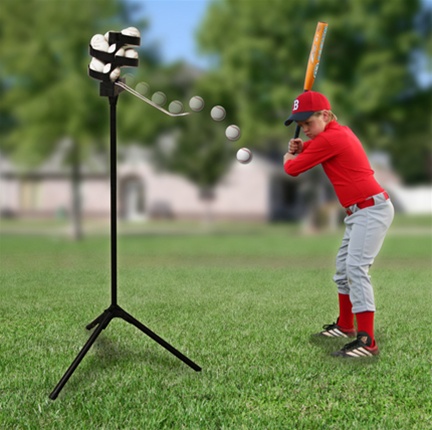For many baseball players, pitching machines can become really useful tools. In many cases, baseball pitching machines have an automatic feeder components and two wheels for easy movements. For many baseball teams, pitching machines are convenient to keep players trained and conditioned to strike the ball accurately and powerfully. There are different types of baseball pitching machines. As an example, jugs pitching machine has wheel projection system. It uses a spinning wheel that throw baseball balls to the hitter. It is available at a wide price range, between $500 and $2,000. Another type of machine that we should consider is slugger pitching machine. It works like sling shot or catapult to throw balls to the hitter. It can be operated by someone, so the hitter has time to prepare. Because it’s manually operated, electricity isn’t needed and it can be adjusted to mimic different pitches. The drawback is that the machine can’t launch baseball balls at high enough velocities. Zooka pitching machine is based on compressed air principle to launch the ball at about 65 mph. It is battery-operated, so the number of throws is relatively limited compared to other machines.
Many teams want to have iron mike pitching machine, which is based on catapult or sling operation. This type of baseball pitching machine is quite bulky, but very powerful. Balls that are thrown could reach about 90 mph. Although the machine is powerful and throws strongly, it doesn’t damage balls like standard wheel machines. Balls are stored inside a big basket, they is delivered to the automatic feeder. When purchasing iron mike pitching machine, we should be ready to spend a ballpark figure of between $2,500 and $5,000. Regardless of the type of the pitching machine, we should know about proper timing. When the bat strikes the ball, the right signal should be sent from our hands to brain. After hitting balls hundreds of times in a day, we should be able to adjust our timing and posture to get the best results. Pitching machines may accept different types of balls, such as real leather baseballs, plastic leather baseballs, rubber replica baseballs and rubber dimpled balls. For best results, we should use authentic leather baseballs that are used in games. However, using hundreds of real leather baseballs for daily training can be quit expensive.
Plastic leather baseballs are good alternative, although they are not actually used for real matches. Just like original baseball, they are also held together with stitches, but after repeated uses, they will tear up. Rubber balls are very durable and may even last forever. However, rubber balls don’t work well when they are wet and don’t really replicate the actual feeling of hitting leather baseballs. If money isn’t a problem for the team, they should use real leather baseballs. Pitching machines should also be integrated in the training sessions, because if we stop using it, then the team can be stuck with a costly device that takes up storage space.
